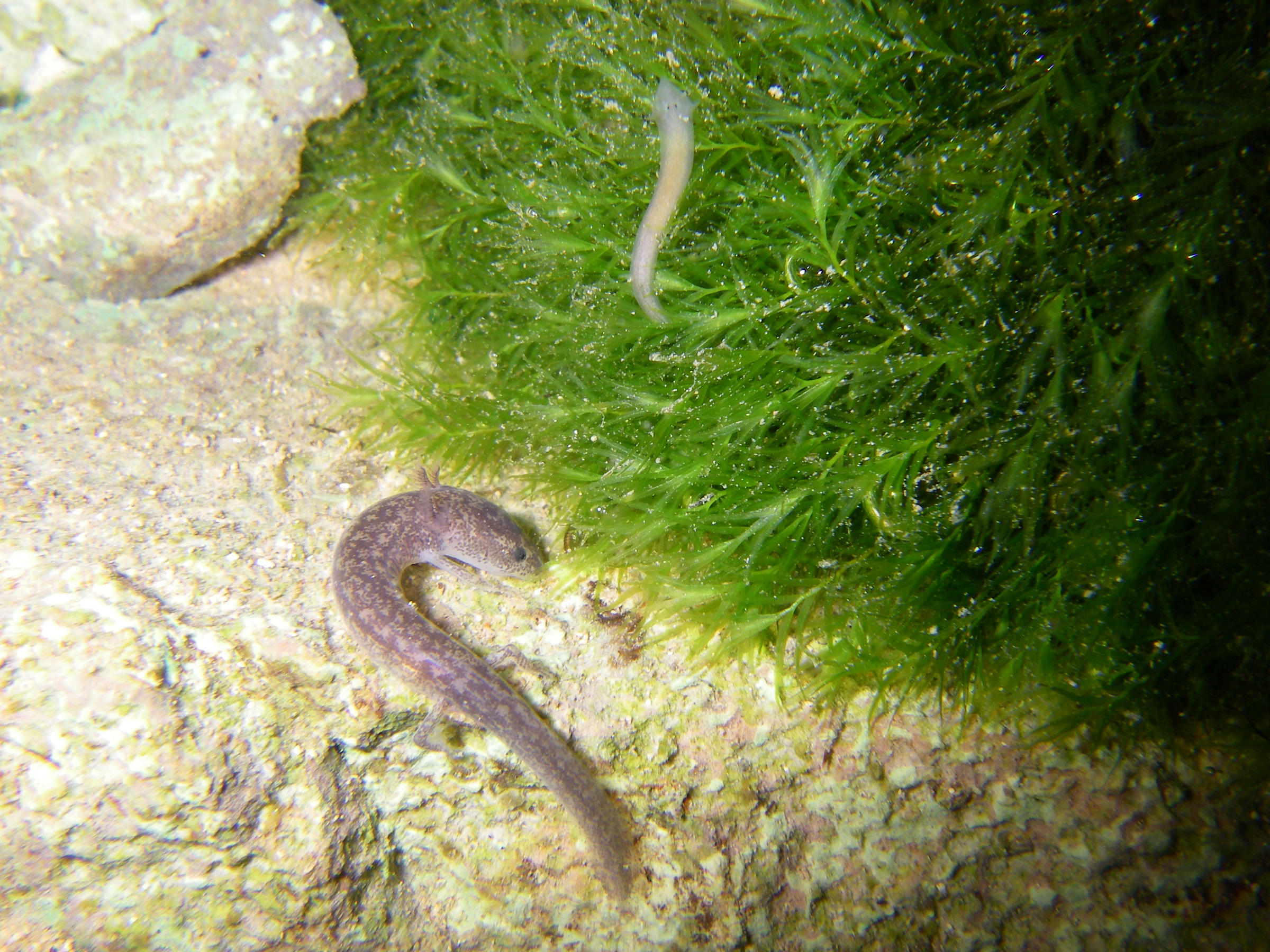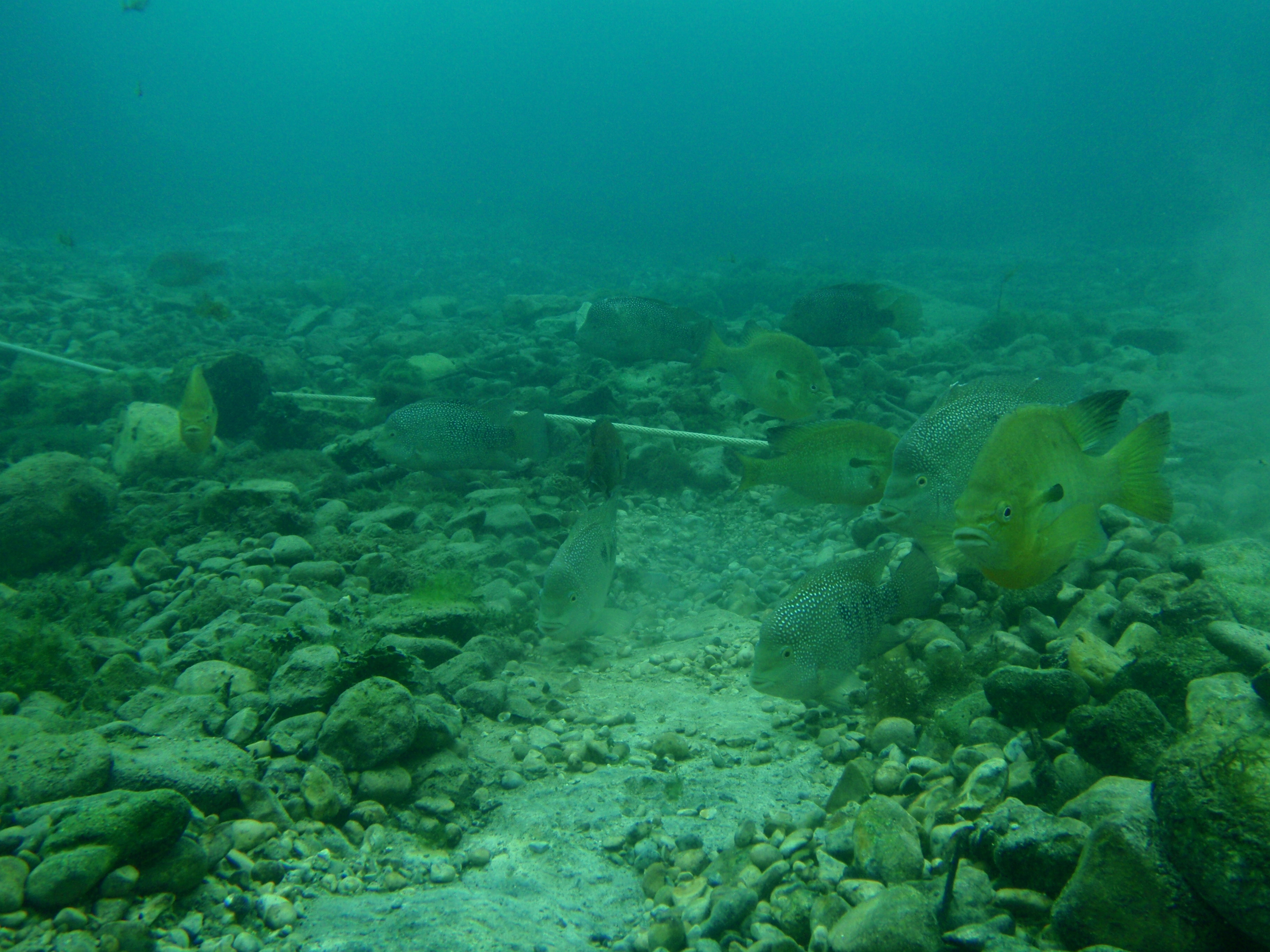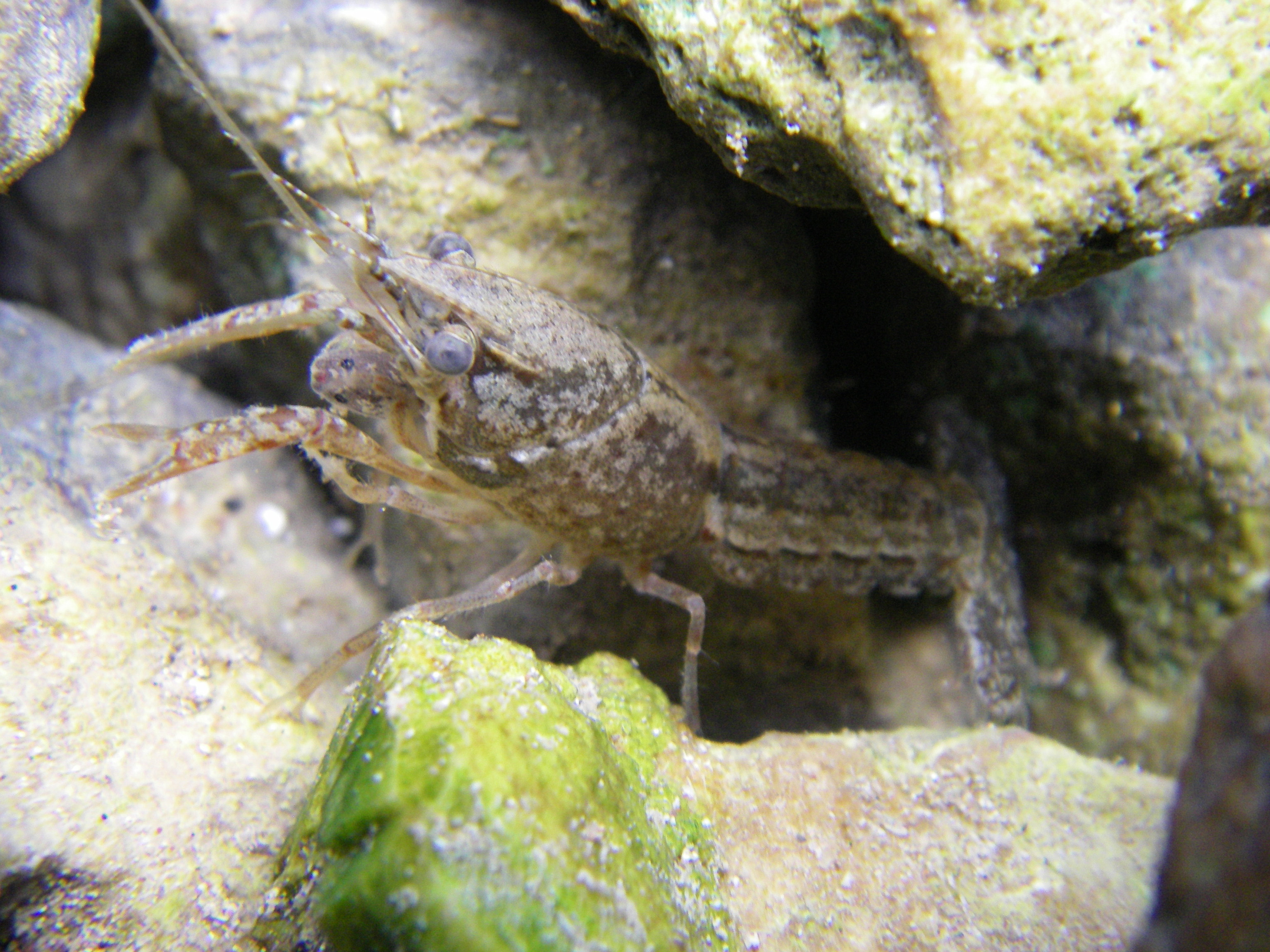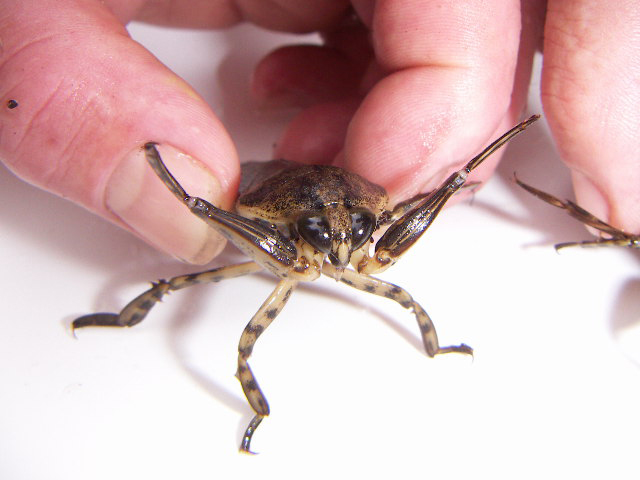Most of what we know about the ecology of Austin’s aquatic salamanders is from studies conducted by the City of Austin on the more easily accessible surface populations. Their diet, like most salamanders, is entirely carnivorous. Based on field observations, fecal content analysis, and new radio-isotope data, they eat a variety of prey that is likely based on both what is available and what fits in their mouth. This includes a variety of snails (Gastropoda), seed shrimp (Ostracoda), copepods (Copepoda), amphipods, insects (such as midge, mayfly, and damselfly larvae, aquatic beetles, etc.), flatworms (Planaria), segmented worms (Annelida), and others.

Amphipods in Eliza Spring.

Barton Springs Salamander eating Amphipods

Predatory Fish
Relationships between the salamanders and their predators are not well understood. Some evidence suggests freshwater sunfish and basses opportunistically feed on salamanders. In the past, many salamander habitats were too shallow to harbor these fish species. Now these fishes have more available permanent and stable habitat in salamander streams because of direct and indirect stream channel modification by humans (e.g. dams creating Barton Springs Pool). Predatory fish presence may hinder dispersal where unnatural intermittent pools intercept the stream pathways that were once more shallow riffles or runs. Recent evidence clearly shows that chemical cues from predatory fish can negatively affect salamander activity.

Crayfish are common in both shallow and deep waters and can be found in nearly every salamander habitat. Crayfish are generalist predators, eating a variety of things from fish and tadpoles to plants and detritus, and have been observed feeding on juvenile Barton Springs Salamanders.
So, it is not unlikely that they are also a common Jollyville Plateau Salamander predator. Interestingly, the burrows created by crayfish may be beneficial in some ways to Jollyville Plateau Salamanders. One theory is that crayfish burrows may act as a path for salamanders to retreat through dense sediment and gravel to reach subsurface waters during dry periods.

Other large invertebrates have been observed feeding on salamanders. Giant water bugs (Lethocerus uhleri) are large ambush predators (up to 65mm) and have been seen at several monitoring sites preying on salamanders, ranid tadpoles, and mosquito fish (Gambusia affinis).
Damselfly larvae of the genus Archilestes are long and slender ambush predators that prey on very small juveniles if given the opportunity.
Cannibalism has also been documented in this species. Adults have been observed regurgitating the remains of juvenile salamanders when captured. This in part helps to explain why juveniles are often found in areas where adults are not, such as in very shallow water on the edge of the stream.
Unlike the surface populations, cave-dwelling Jollyville Plateau Salamanders are the top predators of that ecosystem. The downside, however, is that prey availability is much lower. Because all troglobitic organisms live in total darkness, there are no primary producers, so they must rely on nutrient input from the surface. The salamanders likely feed on available troglobitic and troglophilic (can live inside and outside caves) crustaceans and insects and potentially accidental prey washed into the caves during rain events.
